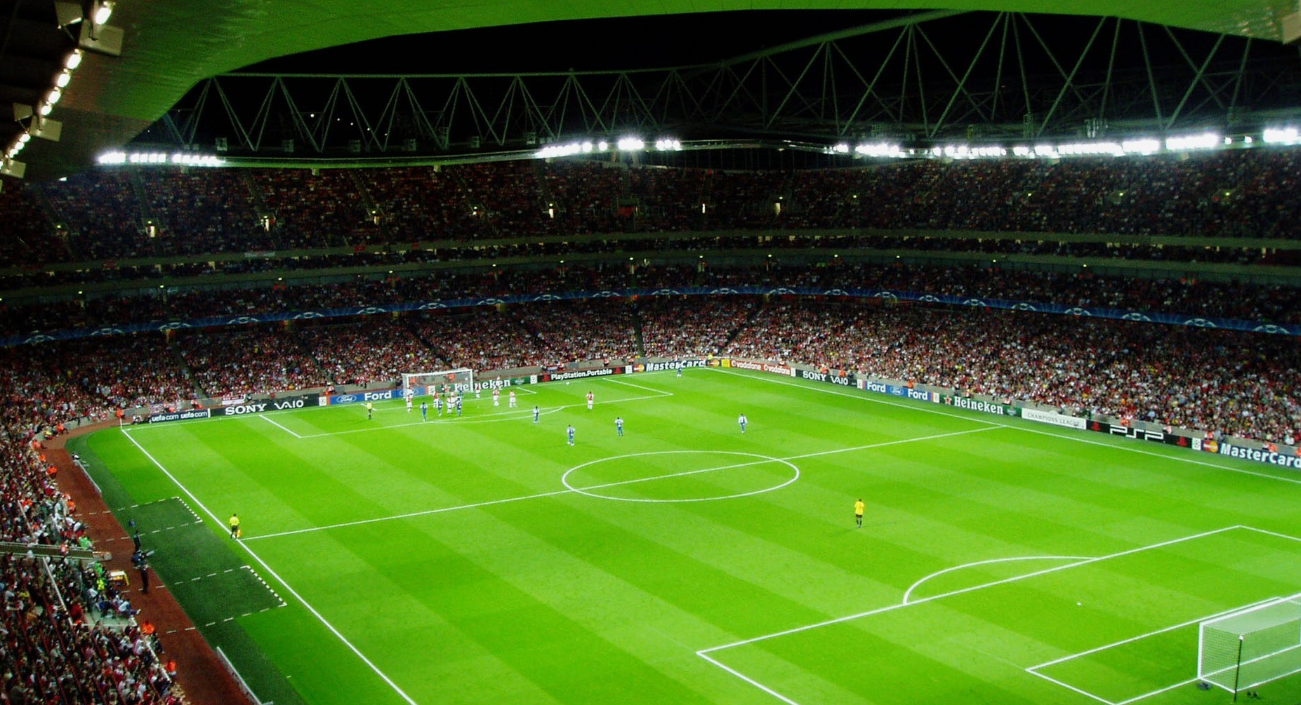Soccer field background images are available in various styles, such as rectangular HD wallpaper, stadium scenes, goal views, and night settings. These images can be found on platforms like Adobe Stock, Freepik, Unsplash, and iStock, offering a wide selection for different projects.
Whether you need an animated, vector, or cool soccer field background, there are options to suit your needs. From outdoor nature fields to aesthetic arena settings, the range of backgrounds caters to different preferences and themes. Explore the diverse collection of soccer field backgrounds to enhance your design projects or sports-related content with captivating visuals.
Soccer Field Background

History of Soccer Fields
The history of soccer fields dates back to ancient times when various forms of the game were played on a variety of terrains. The evolution of soccer fields has been a fascinating journey, marked by key developments in design and infrastructure. Understanding the history of soccer fields provides valuable insights into the game’s evolution and the impact of technology and innovation on the sport’s playing surfaces.
Evolution of Soccer Fields- Soccer Field Background
The evolution of soccer fields has been influenced by cultural, technological, and environmental factors. From the open fields of ancient civilizations to the modern, well-maintained pitches, the transformation reflects the game’s global popularity and the increasing emphasis on player safety and performance.
Key Developments In Soccer Field Design
Over the years, significant advancements have shaped the design and construction of soccer fields. From the introduction of standardized field dimensions to the implementation of advanced turf management systems, each development has contributed to enhancing the quality and consistency of playing surfaces, ensuring a more enjoyable experience for players and spectators alike.
Dimensions and Layout
Soccer fields are the heart of the game, providing the stage for players to showcase their skills and athleticism. Understanding the dimensions and layout of a soccer field is essential for players, coaches, and fans alike. From the standard measurements to the importance of field markings, the structure of the field plays a crucial role in the flow and dynamics of the game.
Standard Soccer Field Measurements
The standard dimensions of a soccer field are defined by the governing bodies of the sport, such as FIFA and UEFA. A regulation soccer field typically measures between 100-110 meters in length and 64-75 meters in width. The goal area, penalty area, and center circle are marked at specific distances from the goal line and touchline, ensuring a consistent layout across different fields.
Importance of Field Markings
Field markings serve as a visual guide for players and officials during a game. The placement of lines, circles, and areas on the field dictates the boundaries, penalty areas, and center markings. Clear and accurate field markings are crucial for enforcing rules, determining offside positions, and awarding fouls and penalties, contributing to the fairness and integrity of the game.
Natural vs artificial Turf
Soccer fields come in two primary types of playing surfaces: natural grass fields and artificial turf. Each type has its own set of characteristics that can impact gameplay and player experience. Let’s explore the differences between natural and artificial turf:
Pros And Cons of Natural Grass Fields
Natural grass fields provide a traditional playing surface that is favored by many players and fans for its lush green appearance. However, maintaining natural grass fields can be challenging due to weather conditions and high maintenance costs.
Advantages And Disadvantages of Artificial Turf
Artificial turf offers a durable and consistent playing surface that is resistant to weather conditions and heavy use. On the flip side, some players may find artificial turf to be less forgiving on joints compared to natural grass.
Maintenance and Upkeep
When it comes to soccer fields, maintenance, and upkeep are crucial for ensuring the longevity and safety of the playing surface. Regular maintenance practices and addressing challenges in maintenance are necessary for keeping a soccer field in top condition. In this article, we will discuss the importance of soccer field maintenance and provide tips for keeping your soccer field in great shape.
Regular Maintenance Practices
Regular maintenance practices are essential for ensuring a soccer field remains in top condition. These practices include:
- Mowing the grass to maintain an appropriate length
- Watering the field to keep the grass healthy and hydrated
- Fertilizing the field to encourage growth
- Aerating the field to promote soil health and drainage
- Removing debris such as rocks and sticks
By following these regular maintenance practices, you can keep your soccer field looking and performing its best.

Challenges In Soccer Field Maintenance
Maintaining a soccer field can be challenging due to a variety of factors. These challenges include:
- Weather conditions such as extreme heat, cold, or rain
- Heavy usage by players, which can cause wear and tear on the field
- Pests such as insects and rodents that can damage the grass
- Environmental factors such as nearby trees and bushes that can impact the field’s health
Despite these challenges, it’s important to address them to keep your soccer field in top condition. By identifying and addressing these challenges, you can maintain a safe and healthy playing surface for your players.
Environmental Impact
The environmental impact of soccer fields is an important consideration in the development and maintenance of these spaces. From the initial construction to ongoing management, soccer fields have the potential to affect the surrounding environment in various ways. Stakeholders must prioritize sustainable practices to minimize the negative impact and promote environmental conservation.
Effects of Soccer Field Construction on The Environment
The construction of soccer fields can lead to habitat disruption and loss of natural vegetation. The excavation and leveling of land for field installation can result in soil erosion and alteration of local ecosystems. Moreover, the use of heavy machinery during construction may lead to soil compaction and disruption of wildlife habitats. Runoff from construction sites can also pollute nearby water bodies, posing a threat to aquatic life.
Sustainable Practices In Soccer Field Management
- Implementing natural turf management techniques to reduce the need for chemical inputs
- Water conservation measures, such as efficient irrigation systems and rainwater harvesting
- Promoting biodiversity by incorporating native plant species in the surrounding landscape
- Integrated pest management to minimize the use of pesticides and herbicides
- Energy-efficient field lighting and use of renewable energy sources
Technology In Soccer Fields
The use of technology in soccer fields has significantly evolved over the years, revolutionizing the way the game is played and experienced. From innovative field drainage systems to advancements in enhancing player performance, technology has become an integral part of modern soccer fields, elevating the game to new heights.
Innovations In Field Drainage Systems
In recent years, innovative field drainage systems have been implemented in soccer fields to ensure optimal playing conditions regardless of weather. These systems utilize advanced underground drainage technology, allowing for efficient water removal and maintaining the integrity of the playing surface.
Role of Technology In Enhancing Player Performance
Technology plays a crucial role in enhancing player performance on soccer fields. Cutting-edge equipment such as GPS tracking devices and performance analytics software enables coaches and trainers to monitor players’ movements, analyze game statistics, and tailor training programs to optimize individual and team performance.
Famous Soccer Fields
Soccer fields are the heart of the game, where players showcase their skills and fans come together to cheer. From iconic stadiums to local parks, these fields hold a rich history and vibrant energy, making them the epicenter of the beautiful game.
Famous Soccer Fields Soccer is one of the most popular sports in the world, and it’s no surprise that some of the most iconic and historic matches have been played on legendary soccer fields. Whether it’s the roar of the crowd, the lush green of the field, or the thrill of the game, soccer fields have become an integral part of the sport. In this section, we’ll take a look at some of the most famous soccer fields that have left a lasting impression on the sport. Iconic Stadiums Around the World One of the most iconic soccer fields in the world is the Maracanã Stadium in Rio de Janeiro, Brazil.
Future Trends
Future Trends:
Emerging Technologies In Field Construction
Soccer field construction is witnessing advancements in technology that are revolutionizing the way fields are designed and built. From innovative materials to state-of-the-art equipment, the future of field construction is evolving rapidly.

Trends In Eco-friendly Soccer Field Design
In response to the growing focus on sustainability, eco-friendly design trends are shaping the future of soccer fields. Incorporating renewable materials, water conservation systems, and energy-efficient lighting, these designs are paving the way for a greener sporting environment.
Conclusion
Soccer field backgrounds offer a variety of options, from realistic to animated designs. Whether for presentations or wallpapers, soccer field imagery provides a dynamic and engaging visual appeal. Explore the diverse range of soccer field backgrounds for your creative projects.
